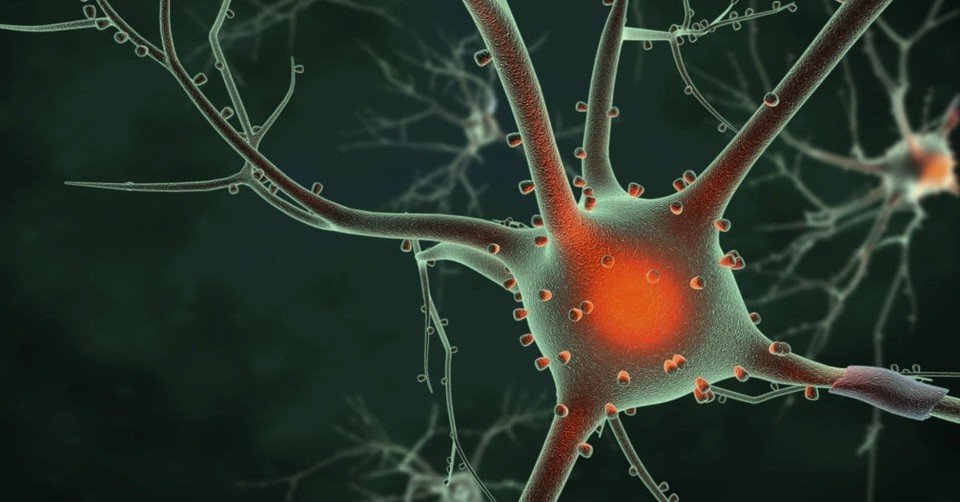When Youth Ministry Meets Neuroscience: Eight Ways Theology and Neuroscience Can Guide Your Ministry to Youth

I have something you probably don't—a picture of my own brain. It's my one souvenir from volunteering for a neuroscience fMRI study a few years ago. Now, don't be too impressed—I know you weren't anyway—because it turns out a picture of my brain isn't good for a whole lot. My wife won't let me hang it in the living room (too creepy, she says); and while people ask to see pictures of my kids, they've yet to be impressed when I pull a picture of my brain from my wallet.
Like my brain picture, many wonder what neuroscience generally is good for—especially in youth ministry. The findings of neuroscientific studies are intriguing, but often esoteric, leaving many people scratching their heads. I want to suggest that neuroscience may be most helpful to youth ministry when we use it to reflect on our own theology and practice. In this article, I briefly point to eight ways that pairing a dash of neuroscientific insight and a smidgen of theological reflection can help recall our attention to Christian beliefs that are important for our practice of youth ministry (but that we may have been tempted to leave behind).
1) When youth ministry meets neuroscience it should leave us in awe of God and teenagers. There are about 100 billion neurons in the average teenage brain, and the number of different ways these neurons can connect together is so limitless that they actually exceed the number of elementary particles—in the universe!1 That's astounding, and every time I consider it, I'm reminded of Psalm 139: "I praise You, for I am fearfully and wonderfully made. Wonderful are Your works; that I know very well." Indeed, the human brain is among God's most magnificent creations; and as a youth worker, I'm struck by the unbelievable worth and incredible potential of every teenager I encounter in ministry. At least in my nerdy little universe, this fact leaves me awed by the incredible potential each teenager holds. Let's face it: It's easy to play favorites, write off particular students, or simply ignore some teens in favor of others. Such an admission isn't politically correct in youth ministry, but you and I know we do it. However, when I remember every teenager who walks through the door—yes, including that teenager—has 100 billion neurons waiting to be connected in infinite ways, I find myself filled with awe by the magnificence of God's creation and am refreshed to minister to those youth in new ways.
2) When youth ministry meets neuroscience it should lead us to remember the doctrine of prayer. Why? During adolescence, the brain undergoes almost a complete metamorphosis through the pruning of unused connections, the setting down of new connections, and myelination that sets many basic brain structures for a lifetime. As a youth worker, you have a part to play in which neuronal connections are made, and you help sculpt the brains of teenagers through the rituals, practices, lessons and activities with which you engage them. That should lead you to fear, trembling—and prayer for the Holy Spirit to work.
When we pray for the Holy Spirit to be present and active, it's known as a prayer of epiclesis. In liturgy, epiclesis usually appears in the celebration of the Lord's Supper ("Come Holy Spirit…"), but in youth ministry the epiclesis is usually invoked by eighth grade Sunday School teachers who pray, "Dear God, I need You NOW!" In reality, youth ministry properly undertaken is always one big prayer of epiclesis. We recognize that we don't have any hope of transforming teenagers into the image of Christ without the dramatic work of the Holy Spirit. If we hope for the malleable teenage brain to be conformed to the image of Christ, then we best remember to pray for the Spirit of Christ to be present and active as we ground our ministries in epicletic prayer.
3) When youth ministry meets neuroscience, we must respond with intentional formation and challenge of teenagers. Though the Holy Spirit is our hope for the transformation of teenagers, we are not off the hook, because we still have a role to play. Brains don't simply form by themselves. Rather, neuroscience tells us that repeated experiences—what we call practices—shape the brain. Additionally, it's through use that the frontal lobes (the seat of executive control and higher reasoning) mature. In other words, maturity takes practice.
A phenomenon known as the adolescent memory bump means that in adulthood, people recall memories formed during adolescence better than any other period of life, and this adds extra weight to the practices of the teenage years. Such practices and experiences of adolescence become self-defining memories that ground the way teenagers tell their stories (narrative identity) for a lifetime. Identity doesn't come through pondering the self, but rather repeated practices that become memories that define the self.
All this suggests that youth ministers should be challenging youth to use their heads while intentionally teaching, modeling and inviting them into ongoing Christian practices and rituals. Now, let's face it, youth workers aren't exactly known for being advanced planners and people of intentionality. Rather, we tend to be the kind who plan Wednesday nights on Wednesday afternoons—trust me, I know this to be true—and who love novelty instead of routine. Additionally, few youth ministries are known for stretching and challenging teenagers intellectually or otherwise. Yet, neuroscience just might be the nudge we need to be reminded that Jesus' call to make disciples is a call to Christian formation, and that formation requires continuity and intentionality, not just good intentions.
4) When youth ministry meets neuroscience, we should reexamine our doctrine of salvation. Our hope for teenagers is not merely that their brains will mature so they have better control of their impulses and emotions (behavior modification). Our message to youth isn't merely that God wants them to grow up, but that God wants to make them new creations—the old has gone and the new has come. The salvation we proclaim is not the same as maturity; salvation is not the same as impulse control. Maturity is not the answer to the human condition.
Christianity ultimately isn't about the behavior modification that comes with brain maturity. As the frontal lobes mature, teens are more able to make reasoned, rational responses that override the raw emotion of the limbic system. However, we have a real problem if we equate this with evidence of being saved because we inadvertently raise brain maturity as savior in place of Christ. In Romans 7, Paul said, "I do what I do not want to do," but his problem wasn't mental immaturity, and his salvation was not full development of his temporal lobes. "Who will rescue me from this awful state? Thanks be to God through Jesus Christ my Lord," Paul said. We need to keep in mind that salvation is radically discontinuous with the normal path and direction of human growth and maturity—and that Jesus does something with us, for us and in us that maturity alone cannot explain. It is important that we not name spirituality by pointing to maturity.
5) When youth ministry meets neuroscience, we need to revisit our doctrine of sin. We need to consider how the neuroscientific claim that teenagers have reduced ability to inhibit some actions has implications for our doctrine of sin. Some would suggest that if we hold to the common definition of sin as a "willful transgression of a known law of God," then teenagers should be exempt—we instead need to blame their immature frontal lobes for any transgressions rather than teens themselves. However, such a suggestion proposes a dichotomy between the teenager and the teenager's brain. The amygdala (and the entire limbic system) is part of who the teenager is, and if the impulse for a fit of rage comes from the amygdala, this doesn't mean that somehow the teenager as a conscious person is exempt—as if the real teenager is locked somewhere in the undeveloped frontal lobe. We need to maintain a holistic view that the person is amygdala and frontal lobes—body, soul and mind—all of which need redemption, not merely mature control.
6) When youth ministry meets neuroscience, we need to remember grace. Neuroscience reminds us that we should not expect teenagers to have it all together. They—actually all of us—are people on the way, people in process. We need to have grace for teenagers who sometimes make decisions out of impulse rather than reason (as we do). Grace is different than patience. Patience bears with teenagers, but grace places them in positions and opportunities they do not deserve. This is risky, but grace always is risky. Our normal modus operandi in youth ministry is to select youth for leadership teams, councils and opportunities who appear responsible and committed; but in doing this, we may be selecting only those who have matured faster neurologically. Remember, maturity happens through challenge and use, so in choosing youth who mature earlier, we actually may be deselecting other students from developing the abilities necessary to be effective leaders in the church. In considering the nature of grace, it might be that we will invest in youth who have not yet shown promise in trust that they will.
7) When youth ministry meets neuroscience, we should reconsider the last night of camp and the emotionalism of decisionism. The amygdala is the site of animalistic emotion, and it's during adolescence when the amygdala increasingly comes under the control of the executive function of the prefrontal cortex. However, because the prefrontal cortex is not completely developed, it's possible for extreme emotion to overrule teens' better judgment and for them later to regret decisions made in the heat of the moment. I'm sure you've sat with teenagers who later regret earlier decisions made in the heat of a particular moment. This also pertains to the spiritual decisions we call on youth to make at camps, retreats and in other emotionally charged contexts. Part of what the research indicates is that when we lead youth to make overly emotional decisions now, those decisions likely will be rejected by reflection in the prefrontal cortex later. Instead, we should consider inviting students to decide to take the next step in a faith journey, not without emotions, but in a setting where they do not overplay the emotional aspects of faith. Good and lasting decisions tend to take place in the context of emotion, reason and relationship.
8) When youth ministry meets neuroscience, we should be reminded of our doctrine of sabbath. In our fast-paced, over-achieving society, only 29 percent of adolescents are getting the nine hours of sleep per night they need. Neuroscientists have found that lack of proper sleep literally ends up starving the brain of energy (glycogen, which is produced during sleep). In other words, Americans have fat bodies and anorexic brains. We never would promote anorexia among our youth, yet we promote neurological anorexia by lack of sleep. Neuroscience has shed light on the amount of sleep teens need, but it will take youth ministers who have reflected well on the doctrine of Sabbath to claim a ministry that supports the rest and rhythm that teenagers need in order to make a change and see our brains as part of our bodies, which are temples of the Holy Spirit.
In these eight snapshots I've tried to pair theology and neuroscience together in service to youth ministry. I've found these reflections helpful for revising my own ministry with youth, and I trust they can be useful for reconsidering aspects of your ministry, while leading you to think deeper about some of the theological implications of adolescent neuroscience—all of which is more useful than a picture of my brain.
1 V.S. Ramachandran, Phantoms in the Brain: Probing the Mysteries of the Human Mind, 1998.
Originally published August 19, 2014.





